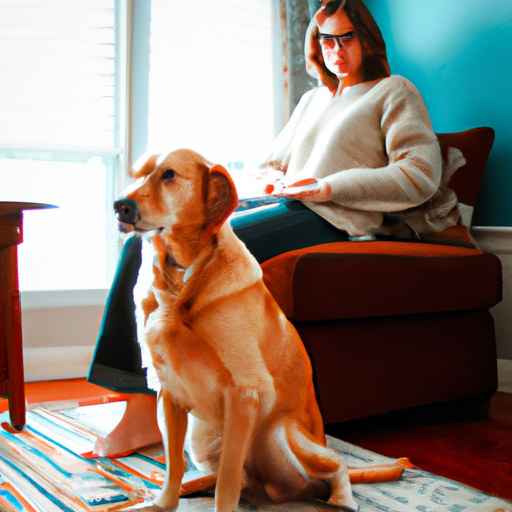Disciplining your dog is crucial for creating a safe, understanding, and respectful environment for both you and your furry friend. If done correctly, it will ensure a harmonious relationship between you two. This guide will provide you with effective strategies to discipline your dog in a kind and effective manner.
Understanding Canine Communication
When disciplining your dog, it’s crucial to understand canine communication. Dogs primarily communicate through body language. Therefore, observing and understanding your dog’s body language can help you correct their behaviors effectively.
Here are some common signs of distress or discomfort in dogs:
- Ears pinned back
- Tail tucked between the legs
- Avoiding eye contact
- Lip licking
Remember, your dog isn’t “bad.” They’re just behaving in a way that they think is appropriate or necessary.
Setting Clear Boundaries
Setting clear boundaries is the cornerstone of effective discipline.
- Choose your rules: Decide what behaviors are acceptable and what aren’t. Remember to be consistent.
- Stick to the rules: Once you’ve set the rules, it’s essential to stick to them. Consistency is key in dog discipline.
- Enforce the rules: If your dog breaks a rule, enforce it immediately. Delayed punishment can confuse your dog and hinder training progress.
Using Positive Reinforcement
Positive reinforcement involves rewarding your dog’s good behaviors to encourage repetition. This can be done using treats, praise, or toys. This method is highly effective and promotes a positive relationship between you and your dog.
| Behavior | Reward |
|---|---|
| Sitting | Treat |
| Staying | Praise |
| Not jumping on guests | Toy |
The Importance of Timing
Timing plays a huge role in effective discipline.
- Immediately reward good behavior: When your dog behaves well, reward them immediately. This helps them understand what behavior is being rewarded.
- Correct bad behavior on the spot: Likewise, if your dog misbehaves, correct them immediately. This helps them associate the correction with the behavior.
The Use of “Time-Outs”
“Time-outs” can be useful for disciplining your dog. If your dog misbehaves, calmly remove them from the situation for a few minutes. This method can be especially effective for overly excited or aggressive dogs.
Be Patient and Consistent
Patience and consistency are key in disciplining your dog. Training takes time, and it’s important not to rush the process. Stay consistent with your rules and methods, and remember to always be patient with your dog.
Seek Professional Help if Needed
If you’re struggling to discipline your dog, don’t hesitate to seek professional help. A professional dog trainer can provide personalized advice and strategies to improve your dog’s behavior.
FAQ
How do I stop my dog from jumping on people?
Redirect your dog’s behavior by teaching them to sit when greeting people. Reward them with treats or praise for remaining seated.
How can I get my dog to stop barking excessively?
Identify the cause of the barking and address it. If it’s due to boredom, provide more stimulation. If it’s due to fear or anxiety, professional help may be needed.
What should I do if my dog continues to misbehave?
Stay patient and consistent. If you’re still struggling, consider seeking help from a professional dog trainer.
How can I discipline my dog without hitting?
Never resort to hitting your dog. Instead, use techniques like positive reinforcement, clear boundaries, and time-outs.
By following these guidelines, you’ll be able to discipline your dog effectively and build a strong, positive relationship with them.



